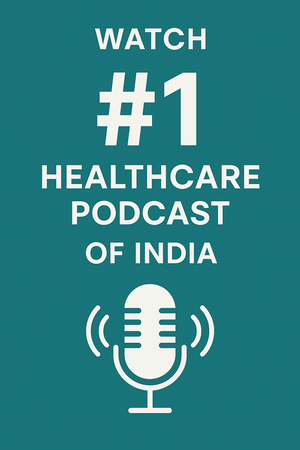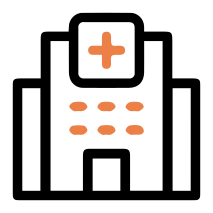Interstitial Cystitis: Causes, Symptoms & Treatment
Interstitial Cystitis (IC), also known as painful bladder syndrome, is a chronic condition characterized by bladder pain and frequent, urgent need to urinate. This complex disorder affects the bladder’s ability to store urine comfortably and can severely impact a person’s quality of life. Understanding the causes, symptoms, and treatment options for interstitial cystitis is crucial for managing this challenging condition.
Causes of Interstitial Cystitis
The exact cause of interstitial cystitis is not well understood, but several factors are believed to contribute to its development. Research suggests that IC may result from a combination of genetic, environmental, and physiological factors.
- Bladder Lining Defects: Some researchers believe that IC may be linked to defects in the bladder’s protective lining, known as the urothelium. This defect could allow harmful substances in the urine to irritate the bladder wall, leading to inflammation and pain.
- Autoimmune Response: IC might be an autoimmune disorder where the body’s immune system mistakenly attacks the bladder tissue. This autoimmune response could cause chronic inflammation and damage to the bladder lining.
- Infection: Although IC is not caused by bacterial infections, some individuals may experience symptoms similar to those of a bladder infection. Chronic irritation or a previous infection might trigger or exacerbate IC symptoms.
- Genetic Factors: There may be a genetic predisposition to developing IC. Some studies suggest that IC may run in families, indicating that genetic factors might play a role in its development.
- Histamine Release: Abnormal release of histamines, which are chemicals involved in allergic reactions, may contribute to bladder inflammation and IC symptoms. This theory is based on the observation that some IC patients also have symptoms of other allergic or histamine-related conditions.
- Pelvic Floor Dysfunction: Problems with the muscles and connective tissues in the pelvic floor can contribute to IC. Dysfunction in this area might affect bladder function and increase pain.
- Trauma or Injury: Previous trauma or surgery to the pelvic area can sometimes lead to IC. Physical damage or scarring from such events may disrupt normal bladder function and contribute to the development of IC.
Symptoms of Interstitial Cystitis
The symptoms of interstitial cystitis can vary widely among individuals and may range from mild to severe. Common symptoms include:
- Pelvic Pain: Persistent pain or discomfort in the pelvic region is a hallmark symptom of IC. This pain may be localized to the bladder area but can also extend to the lower abdomen, back, or genital area.
- Frequent Urination: Individuals with IC often experience a frequent urge to urinate, which may occur during the day and night. The need to urinate may be accompanied by discomfort or pain.
- Urgency to Urinate: A sudden, intense need to urinate that may be difficult to control. This urgency can be distressing and interfere with daily activities.
- Painful Urination: Pain or burning sensation during or after urination is common in IC. This discomfort may persist even after the bladder is emptied.
- Bladder Pressure: Some individuals with IC report a feeling of pressure or fullness in the bladder, even when it is not full.
- Pain During Intercourse: Pain or discomfort during sexual activity is a common symptom for women with IC. This pain can affect intimacy and sexual satisfaction.
- Flare-Ups: Symptoms of IC can fluctuate, with periods of exacerbation (flare-ups) followed by periods of relative relief. Flare-ups may be triggered by certain foods, stress, or other factors.
- Increased Sensitivity: The bladder may become more sensitive to stimuli, resulting in heightened pain or discomfort in response to activities that are typically not problematic.
Diagnosis of Interstitial Cystitis
Diagnosing interstitial cystitis involves a comprehensive evaluation to rule out other potential causes of similar symptoms and confirm the presence of IC. The diagnostic process typically includes:
- Medical History and Symptom Review: The healthcare provider will take a detailed medical history and ask about symptoms, including their duration, frequency, and impact on daily life.
- Physical Examination: A physical examination, including a pelvic exam for women, may help identify signs of bladder tenderness or other abnormalities.
- Urinalysis: A urine test to check for signs of infection, blood, or other abnormalities that might indicate a different condition.
- Cystoscopy: A procedure in which a thin, flexible tube with a camera (cystoscope) is inserted into the bladder through the urethra. This allows the healthcare provider to visually inspect the bladder lining for signs of inflammation or other abnormalities.
- Bladder Biopsy: In some cases, a small tissue sample from the bladder may be taken during cystoscopy for examination under a microscope. This can help confirm the diagnosis and rule out other conditions.
- Potassium Sensitivity Test: A diagnostic test in which a potassium solution is introduced into the bladder to observe the reaction. Pain or increased symptoms after the test may indicate IC.
- Urodynamics: A series of tests to measure bladder function, including capacity and pressure. These tests can help assess how well the bladder is working and identify any dysfunction.
Treatment Options for Interstitial Cystitis
There is no cure for interstitial cystitis, but various treatments can help manage symptoms and improve quality of life. Treatment plans are often individualized and may include a combination of the following approaches:
- Medications:
- Pain Relievers: Over-the-counter pain relievers, such as ibuprofen or acetaminophen, can help alleviate pain and discomfort associated with IC.
- Bladder-Specific Medications: Medications like pentosan polysulfate sodium (Elmiron) are designed to protect the bladder lining and reduce symptoms.
- Antihistamines: For individuals with IC related to histamine release, antihistamines may help reduce inflammation and discomfort.
- Antidepressants: Certain antidepressants, such as amitriptyline, can have pain-relieving effects and help manage chronic pain associated with IC.
- Antibiotics: If a bacterial infection is present, antibiotics may be prescribed to address the infection.
- Dietary Changes:
- Avoidance of Trigger Foods: Some individuals with IC find that certain foods and beverages, such as caffeine, alcohol, spicy foods, and artificial sweeteners, can trigger symptoms. An elimination diet or food diary may help identify and avoid these triggers.
- Bladder-Specific Diet: A diet low in irritants and high in bladder-soothing foods, such as water, non-citrus fruits, and vegetables, may help reduce symptoms.
- Physical Therapy:
- Pelvic Floor Therapy: Specialized physical therapy targeting the pelvic floor muscles can help address muscle tension, improve bladder function, and reduce pain.
- Biofeedback: A technique that uses sensors to provide real-time feedback on muscle activity, helping individuals learn to control pelvic floor muscles and reduce pain.
- Bladder Instillations:
- Intravesical Treatments: Bladder instillations involve introducing medication directly into the bladder through a catheter. Solutions may include medications such as dimethyl sulfoxide (DMSO) or heparin to reduce inflammation and pain.
- Behavioral Therapies:
- Bladder Training: A strategy to gradually increase the time between urinations and help the bladder accommodate larger volumes of urine.
- Cognitive Behavioral Therapy (CBT): A form of therapy that addresses the psychological impact of chronic pain and helps develop coping strategies.
- Surgical Interventions:
- Hydrodistension: A procedure in which the bladder is filled with fluid to stretch and potentially alleviate symptoms. This may provide temporary relief for some individuals.
- Surgical Bladder Reduction: In severe cases, surgical options such as bladder reduction or augmentation may be considered to reduce symptoms and improve bladder function.
- Alternative Therapies:
- Acupuncture: Some individuals find relief from symptoms through acupuncture, which involves inserting thin needles into specific points on the body to alleviate pain and improve overall well-being.
- Herbal Supplements: Certain herbal supplements, such as marshmallow root or aloe vera, may have soothing effects on the bladder. However, their effectiveness and safety should be discussed with a healthcare provider.
- Lifestyle Modifications:
- Stress Management: Techniques such as mindfulness, meditation, and relaxation exercises can help manage stress, which may exacerbate IC symptoms.
- Regular Exercise: Engaging in low-impact exercises, such as walking or swimming, can improve overall health and potentially reduce symptoms.
Management and Follow-Up
Ongoing management and follow-up are important for individuals with interstitial cystitis to ensure effective symptom control and overall well-being. Key aspects include:
- Regular Monitoring: Regular visits to healthcare providers for monitoring symptoms, adjusting treatment plans, and addressing any new or worsening symptoms.
- Patient Education: Providing education on managing symptoms, identifying triggers, and implementing lifestyle changes to support overall health and well-being.
- Emotional Support: Access to counseling, support groups, and mental health resources to help individuals cope with the emotional impact of living with a chronic condition.
- Coordination of Care: Collaboration between urologists, pain specialists, physical therapists, and other healthcare professionals to ensure comprehensive care and address all aspects of interstitial cystitis.
- Personalized Treatment Plans: Developing individualized treatment plans based on the specific needs and responses of each patient, with a focus on optimizing symptom management and improving quality of life.
Frequently Asked Questions
- What is interstitial cystitis?
Interstitial cystitis (IC) is a chronic bladder condition characterized by pelvic pain, frequent and urgent urination, and discomfort. It affects the bladder’s ability to store urine comfortably. - What are the common symptoms of interstitial cystitis?
Symptoms include pelvic pain, frequent urination, urgency to urinate, painful urination, bladder pressure, and pain during intercourse. Symptoms can vary in severity and may fluctuate over time. - What causes interstitial cystitis?
The exact cause of IC is not well understood, but potential factors include bladder lining defects, autoimmune responses, infections, genetic predisposition, and pelvic floor dysfunction. - How is interstitial cystitis diagnosed?
Diagnosis involves a thorough medical history, physical examination, urinalysis, cystoscopy, bladder biopsy, and other tests to rule out other conditions and confirm IC. - What are the treatment options for interstitial cystitis?
Treatment options include medications, dietary changes, physical therapy, bladder instillations, behavioral therapies, surgical interventions, and alternative therapies. A combination of treatments may be used to manage symptoms. - Can dietary changes help manage interstitial cystitis?
Yes, avoiding trigger foods and beverages, such as caffeine, alcohol, and spicy foods, can help reduce symptoms. A bladder-specific diet may also provide relief for some individuals. - Is there a cure for interstitial cystitis?
There is currently no cure for interstitial cystitis, but various treatments can help manage symptoms and improve quality of life. Treatment plans are often individualized based on the severity of symptoms and patient response. - How does interstitial cystitis impact daily life?
IC can significantly impact daily life by causing pain, frequent urination, and discomfort. It may affect work, social activities, and emotional well-being, requiring adjustments and support to manage the condition. - Are there any lifestyle changes that can help with interstitial cystitis?
Yes, lifestyle changes such as stress management, regular exercise, and avoiding bladder irritants can help manage symptoms. Additionally, seeking emotional support and engaging in activities that promote overall well-being can be beneficial. - What should I do if I suspect I have interstitial cystitis?
If you suspect you have interstitial cystitis, consult a healthcare provider for evaluation and diagnosis. A comprehensive assessment will help determine the appropriate treatment options and provide strategies for managing symptoms.






 and then
and then